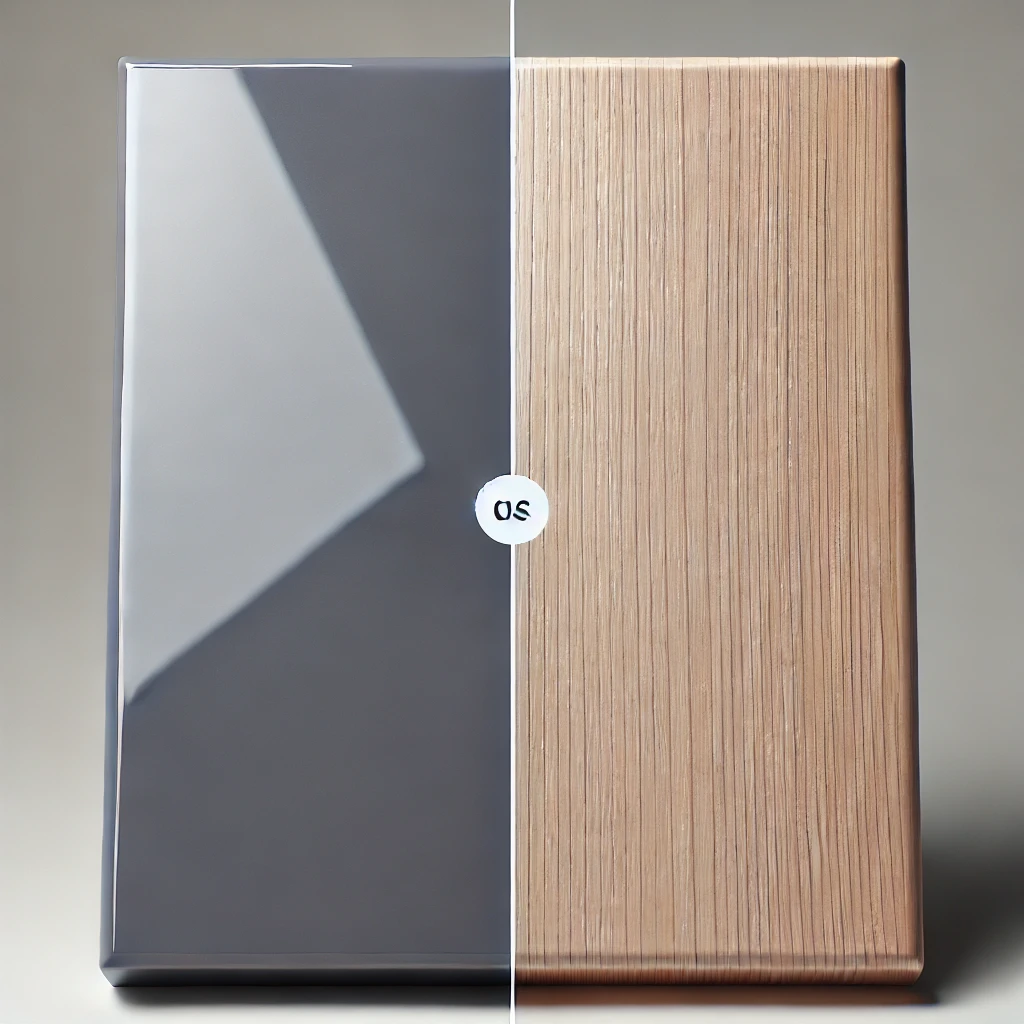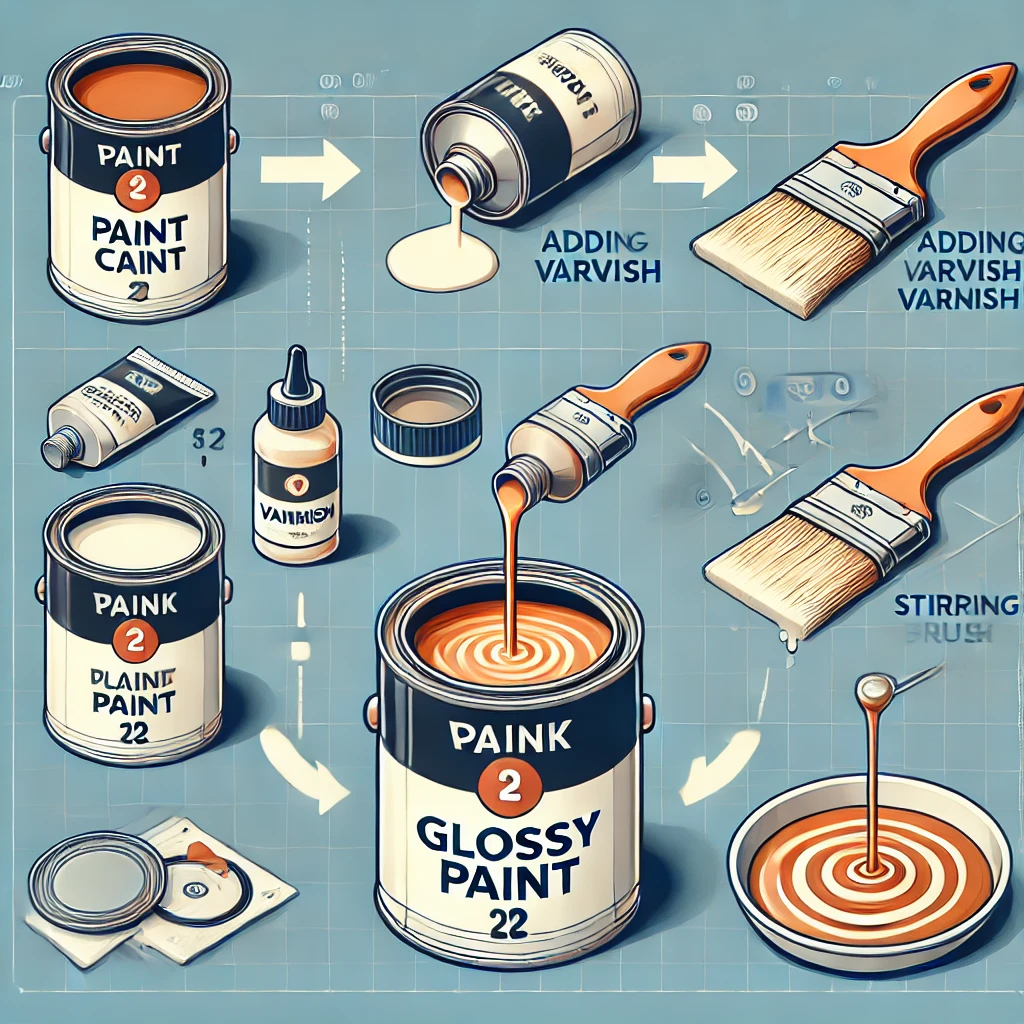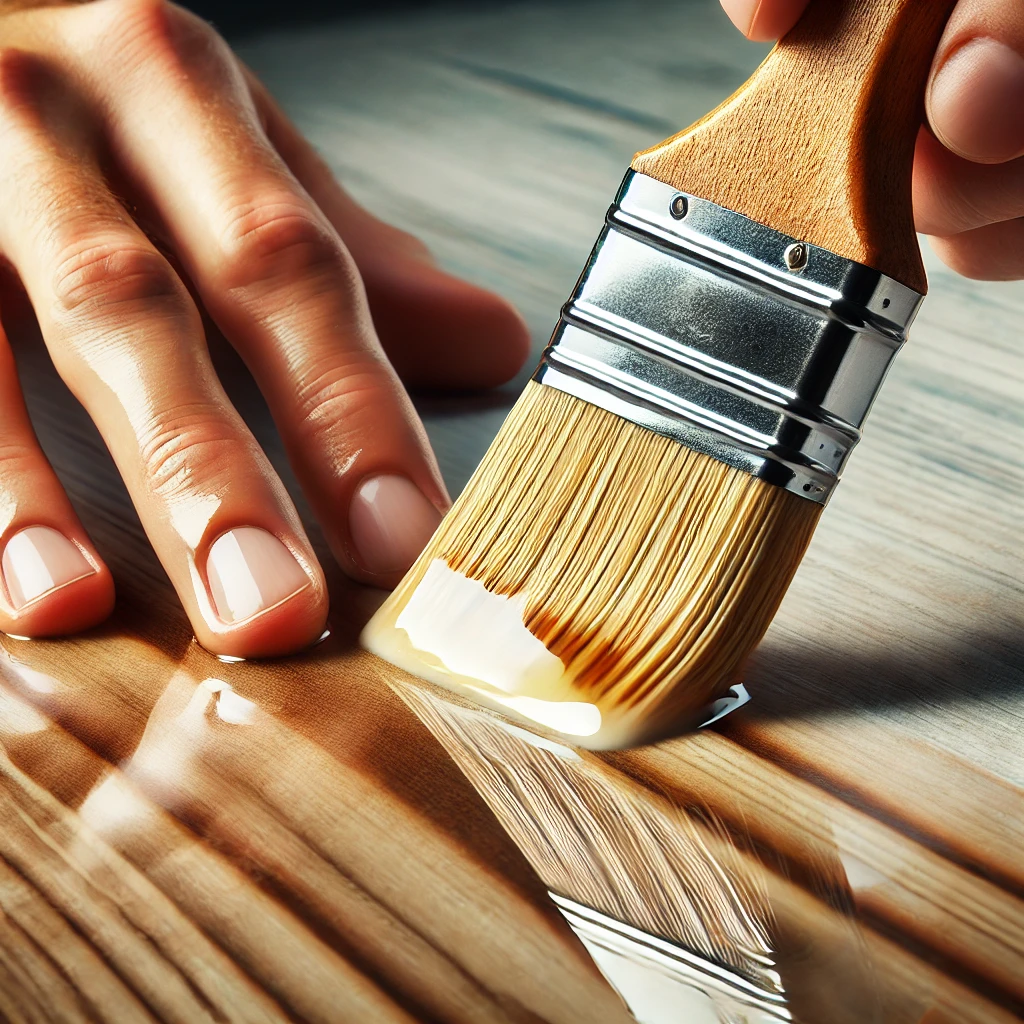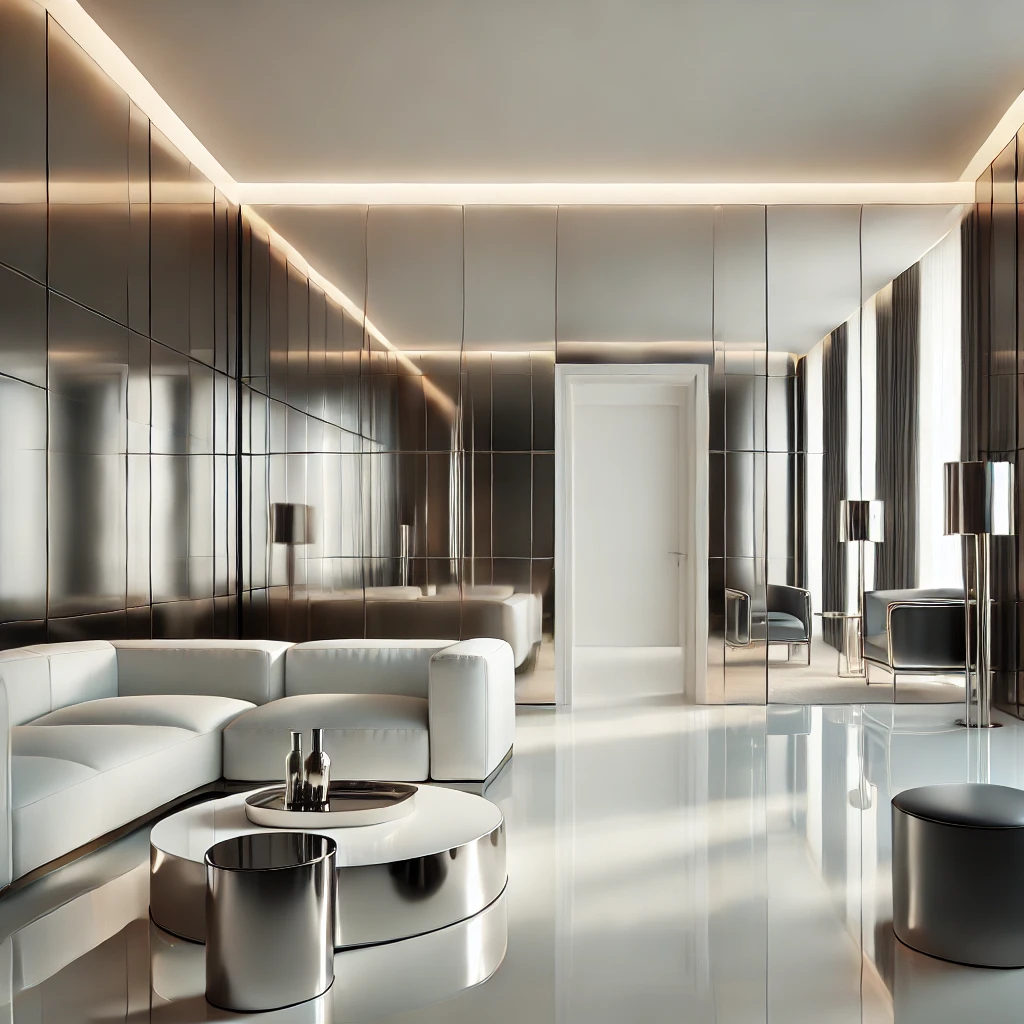Using acrylic or glossy paint is a joy since it is possible to be applied to a wide range of surfaces, and the brilliant colors it produces are spectacular.
Many artists, though, employ varnish to give their paintings a glossy finish after they’ve finished painting. Also, a retouching varnish might be used on occasion.
What’s the best method for getting that shiny, high-gloss finish without applying varnish? There are a variety of other options if you don’t want to treat your artwork in varnish for any reason.
Varnishes have a glossy finish, but so may art acrylic and resins gloss media. You only need to add them to the paint to achieve the desired shine.
After the last coat of paint, you have the option of applying a gloss varnish rather than a matte varnish. If you’re going to be working with acrylics, you’re definitely interested in reducing the number of harmful materials you use.
Varnishes do not necessarily include toxins, it is possible to avoid them and obtain a glossy finish in a different manner. Without the use of the varnishing procedure, you may produce the shine of acrylic paint, as shown in this article.
Also read: Is Spray Paint Waterproof?
About High Glossy Paint

Paint ingredients are essential for understanding what’s in high-gloss paint. Pigment and binders are the most significant components of paint.
Your paint’s color is determined by the pigment. In most cases, it’s a finely ground metal with distinct hues, such as reddish iron.
Binder, commonly known as resin, is required to hold the pigment together and spread it evenly because the pigment is not a liquid and will not adhere to a surface.
In the end, all that remains is the pigment, binder, and many more additives that are left on a surface after the solvent has evaporated.
There are a lot of things that go into creating a high gloss finish. The lower the gloss, the fewer pigment particles there are in comparison to the binder.
In general, the binder will have a less even distribution of color particles as more pigment is added. As a result, the surface becomes rougher and more light-reflective.
The paint appears flat or “matte” when the light gets reflected in an uninformed pattern. In contrast, a smoother surface with fewer pigment particles and a larger volume of the binder permits light to reflect uniformly off the binder without being obstructed by the pigment particles themselves.
This results in a high gloss surface due to the homogeneous reflection.
Positive Sides Of Glossy Paint
What are the advantages of glossy over matte paint? Paint with a lot of pigment may appear to be of greater quality or survive longer than paint with less pigment. That’s not the scenario at all, however. Glossy paint has many advantages, including the following:
Long-Lasting
Higher levels of pigment in flat and matte paints mean that they are more prone to scratching and scuffing. In addition to the increased binder percentage, the lower pigment content and greater protection provided by the binder make glossy paints better at mitigating damage.
Humidity-Resistance
Like glossy paint, it serves as a barrier against dampness. Glossy paint is neither waterproof nor water-resistant in any way. As a result, a higher binder content makes the paint more water-resistant than matte paint.
Create An Accent
Adding gloss paint to your area creates a focal point that attracts attention. If you don’t want the ceiling to be the focus of attention, you’ll use matte paint.

Dramatic & Bold Colors
Glistening paint, of course, makes any hue appear more vibrant and dramatic. It is the homogeneous light reflection that makes the hue shine.
If you want to draw attention to certain areas of your house, such as the trim or the walls, consider painting them with glossy paint.
Extremely Reflective
With the appropriate paint, you can brighten any room in your home in a matter of minutes. Glossy paint’s reflective features allow you to create a bright, welcoming area in your home even if you don’t have any windows or natural light in the room.
Washable
This type of paint may be washed. Glossy paint makes it possible to clean surfaces without risking harm to the paint because of its high sheen. It is more difficult to clean matte paint surfaces since they are more vulnerable to water damage.
Goes Good With Others
Using a glossy paint finish with any other form of paint finish is one of the biggest benefits of this paint type. Paint your trim higher gloss and the walls semi-gloss to draw attention to it, or vice versa for a completely different effect on your room’s decor.
To detract attention from your ceiling, use a combination of glossy wall paint and matte ceiling paint.
Process On How To Make Glossy Paint
In some cases, you may want to create a high-gloss effect in the painting, and varnish would be ineffective. In order to achieve a glossy finish, you’ll need something additional to ensure that the procedure works. When it comes to the end result, though, simplicity and ease of completion are more important considerations.

Quick and simple guide on how to make glossy paint:
Materials:
- Base paint (acrylic, oil, etc.)
- Gloss medium (acrylic or oil-based)
- Palette or mixing container
- Paintbrush or other application tool
Instructions:
- Choose your base paint: Start with a base paint that you want to make glossy. Acrylic or oil paints work well for this purpose.
- Add gloss medium: Mix the gloss medium into your base paint on a palette or mixing container. The amount of gloss medium you add will determine the level of glossiness. More medium will result in a higher gloss finish.
- Mix thoroughly: Stir the paint and gloss medium together until they are fully combined and there are no streaks or lumps.
- Apply the paint: Use your chosen application tool (brush, roller, spray gun) to apply the glossy paint to your surface.
- Let it dry: Allow the paint to dry completely before applying additional coats or other finishes.
Additional Considerations:
- Surface Preparation: Ensure the surface you’re painting is clean, dry, and free of any dirt, grease, or wax.
- Temperature and Humidity: Ideal painting conditions are a moderate temperature and low humidity.
- Experimentation: Don’t be afraid to experiment with different ratios of paint and gloss medium to achieve your desired level of glossiness.
By following these steps and tips, you can create beautiful, glossy finishes for your painting projects.
Glossy Medium
According to many painters, employing a glossy medium rather than varnish would significantly improve your chances of achieving the desired result with your painting.
Because of the ease with which they can be applied and used, glossy mediums are beneficial and simple to work with at the same time.
Simply mixing acrylic medium on a palette with the paint will give your painting a high gloss finish, and you’ll be good to go in no time.
The paint will need to dry completely after it has been mixed with the medium, and then you will notice that the glossy effect would be reflected in the finished piece of artwork.
However, if you want your paint to be extremely glossy, you may choose to add a small amount of varnish to the surface of the painting.
It is highly successful to use a glossy acrylic medium, and the glossy finish is really obvious, but sometimes you may require something extra, and varnish can provide that.
On the contrary, there are products that combine varnish and medium in a single container, which you might choose if you want a painting that sparkles a lot.
This would be the quickest and most straightforward method of achieving a glossy finish without the use of glossy varnish.
Art-Grade Resins
Using art-grade resins to achieve a thicker gloss coat on your acrylic paint is another method for achieving a thick gloss finish.
These types of resins are specifically developed for use in artwork, which means they will not hurt or degrade the acrylic paint in any way while in use.
The varnish also assists to preserve artworks from the effects of ultraviolet light and yellowing that may occur over time.
Artists generally advocate art-grade resins, as it is a substance that is specifically designed for use in creative endeavors.
You will be able to produce a high gloss acrylic surface while also providing protection for the artwork with this method.
Because the ArtResin has a mild odor, you will not be compelled to let the fragrance sit to dissipate for an extended period of time.
When it comes to hardwood surfaces, art-grade resins are particularly well-suited, so if you’re putting paint on wood, you should consider using this type of surface finish.
You will almost certainly attain the gloss you desire, and you will also produce a light layer of protection by applying only a thin layer of product.
In the end, it is important to remember that all works of art require some form of protection because they cannot be damaged in a very short amount of time if they are not properly protected.
Avoid Hardware Epoxy Resins
Using resins to create a glossy finish on the artwork, in addition, to providing protection for your creation, as previously said, might be beneficial.
Not all resins, on the other hand, are acceptable for use with acrylic paint. This indicates that you must take great care in selecting the product you desire to utilize.
That being stated, you should be aware that epoxy resins from hardware stores are not recommended for use in creating a varnish coat on acrylic paint.
To put it another way, you should avoid using these types of resins because they can permanently ruin your creative work.
These types of resins are affordable, and they are frequently available at your local hardware store; nevertheless, their effect and quality are not what you are going for in your paintings and other crafts.
Upon application of epoxy resins, it is possible to believe that there is no difference and that they perform admirably well.
However, the shift will take place over the course of the year, which means you will notice some modifications in the artwork that you would not enjoy.
These resins may look nice for some crafts, but they are intended to be updated every decade, which is not anything you could do if you are concerned about the condition of a painting you own.
What you will get if you use hardware store resins is fading and discoloration of pigment, in addition to a lack of clarity in the colors you choose.
Your acrylic would become murky and sloppy, and it will begin to lose its original shape as a result of using this type of finish on your acrylic paint.
It is not recommended that you use this type of finish on your acrylic paint.
Majority Choose Varnish
The vast majority of painters prefer to varnish their works in order to protect their creations from the elements. It is a wise decision because acrylic paintings are more susceptible to damage than oil paintings.

When selecting your varnish, you will have the option of selecting the finish, which is a simple technique to add a gloss layer to your painting.
Acrylic varnish is frequently available in a variety of finishes, including gloss, satin, and matte, and you can take advantage of these alternatives.
For example, if your painting includes a gorgeous lake, you can opt to varnish the area of the painting that contains the lake with a gloss.
If you want a slight contrast in the finish, varnish the remaining paint with a satin finish, or if you want a striking difference in the finish, varnish it with a matte finish instead.
It is also critical that the varnish you use is of high quality for artists. Again, varnishes purchased at a hardware store may discolor your painting and provide less UV protection.
If you have spent a lot of effort and time on painting, there is no way to cut corners when it comes to the final phases.

Final Verdict
It was like making paint glossy was a tough task, one that was best left to painters who employed glazes and fake finishes to change your dull coat to a high gloss.
However, these days, almost all home improvement stores have varnish that will allow you to easily and rapidly transform your matte paint into a beautiful sheen.
Always remember to test your paint or finish on a small section of your wall first, in an inconspicuous location, before proceeding with a larger project.
You don’t want your kitchen’s main wall to be the site of a failed experiment in which you tried to combine varnish with a matte coat. Hope you enjoyed the guide. All the best.
